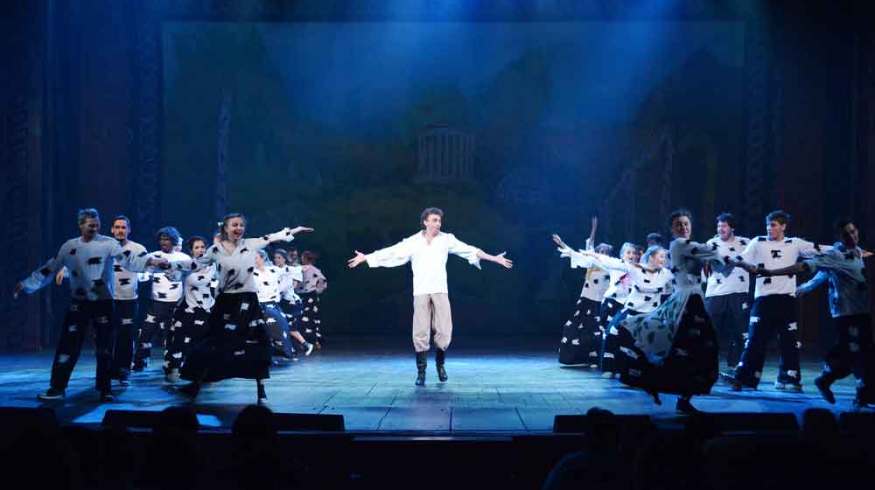
Why Live Streaming Is Vital for Theater’s Second Act
Far from disappearing when live performances started to come back, live streaming did the one thing everyone wanted it to do—it got better.
Live streaming had been around for a while before the pandemic hit, but the arrival of COVID-19 cemented its role as a low-cost broadcast substitute for the real thing. The thinking was that as soon as the virus went away, so would this stopgap technology—or at least go back to the low level it was pre-2020.
Now that the live world is reawakening, albeit slowly, quite the opposite is happening. Performances, gatherings, events, and thousands of other ways people interacted with theater deferred to live streaming over the last eighteen months.
It seems that people liked them but didn’t like how bad they were technically. They were simply looking for a better experience.

The performing arts world is an example of how shows are tentatively coming back—to entice the COVID-shy to venues—not to the mention the 30% that tourism brings.
As a result, shows are having to be of the “greatest hits” variety just to maximize the numbers in theaters. Anything newly commissioned won’t get the foot-fall and may need bedding-in time, something that 2021’s live theater programmers can’t afford to do. For them, a separate streaming channel might be the test a new show needs.
Streaming Live from the Apollo
An example of a venue diversifying is the Apollo Theatre in New York. This, of course, is and was a live audience venue and they admit that live streaming was the antithesis of what they stood for. But, they now have a new virtual stage that’s created a new type of show.
Kamilah Forbes, their executive producer, states:
We hosted a conversation with John Legend right after a Wyclef concert. And there was an immediate comfortability in this digital space. I saw a different side of him as an artist, as an activist, as a leader, as a father, as a husband. I saw different facets of him that I’ve never seen before.
– Kamilah Forbes
Now, the Apollo Theater utilizes their digital stage to host everything from amateur nights to major musical events.
Branching out into the digital space has allowed us to bring Apollo programming much farther outside of our reach for in-person programming, and reach new potential audiences.
– Kamilah Forbes
At Home for the National Theatre
The National Theatre in London activated their “NT Live” platform pre-pandemic as a way to get people to see their plays in cinemas. A Sunday Times article quoted that ten million people watched plays this way over the last decade. But, once NT Live morphed into “NT at Home” last year, sixteen million people watched the lockdown streams over sixteen weeks.

The National Theatre is already promoting plays for NT at Home for the rest of the year, including A Streetcar Named Desire with Gillian Anderson and Vanessa Kirby, Anthony & Cleopatra with Ralph Fiennes, and Under Milk Wood with Michael Sheen.
So, the good news is that streaming is here to stay, especially for the performing arts, and that brings with it possibilities for video producers to add streaming to their skillset.
What Do I Need to Become a Streamer?
If you’re at the Apollo in New York or the National Theatre in London, it means racks of equipment and some water-tight streaming technologies from the likes of Vimeo’s OTT service.
The best way forward, if you think you could live in this replica broadcast world, is to assess your skills and level of gear.

David Joshua Ford, a director and photography in New York, considers a career in photography and videography as a perfect leg up to one in streaming, stating:
Photographers certainly have a head start in the streaming space over people unfamiliar with the medium. The lighting, framing, and picture quality will signal to your audience that they are in the hands of a professional.
Many cameras these days will even allow a USB webcam connection direct from the camera, without the need for a specialized HDMI-to-USB webcam device (such a CamLink4K). Add a decent external microphone to that, and you have a basic streaming setup.
When you start bolting on lower thirds, graphics, video playback, chat on screen, Picture-in-Picture, remote guests, multiple platform destinations, you’ll quickly see that streaming is a “how long is a piece of string?” exercise.
However, the important thing is to remember to keep your content forefront in your mind. Start simple. Don’t get overwhelmed by the gear. Focus your energy on the unique perspective you have to share.
– David Joshua Ford, Director and Photographer
Switchers: The Heart of Your Streaming System
If you want any kind of multi-camera production, which is part of making streams “better,” then you need a switcher. At its basic level, this is the way to bring different sources into your program.
In late 2019, Blackmagic Design introduced their ATEM Mini product. It was cheaper and better than anything else that had come before. But, since the ATEM Mini launched, other companies are starting to fill the market.



Now Streaming Is a Mature Market
For performance arts, there’s now little excuse for at least a multi-camera parallel stream to the main event. But this expectation will be mirrored in other forms of streams—school concerts, yoga classes, etc.
If your video production business is flat at the moment, live streaming might be worth a look. You’ll find that you have half the equipment you need in the kit bag already.
Bonus Video
Looking to start a livestream for yourself? If you need a step-by-step run-through, follow our tutorial on how to do just that for the streaming platform Twitch.
A few more live streaming tips, tricks, and advice for you:
- Setting Up a Live Performance Stream: Budget to Professional
- The Most Practical Livestreaming Microphones on the Market
- Get Your Game on: How to Become a Successful Streamer
- How to Use OBS Studio for Streaming and Video Conferencing
- A Complete Guide to Streaming Video Games on Twitch
Cover image via Jonas Petrovas.





